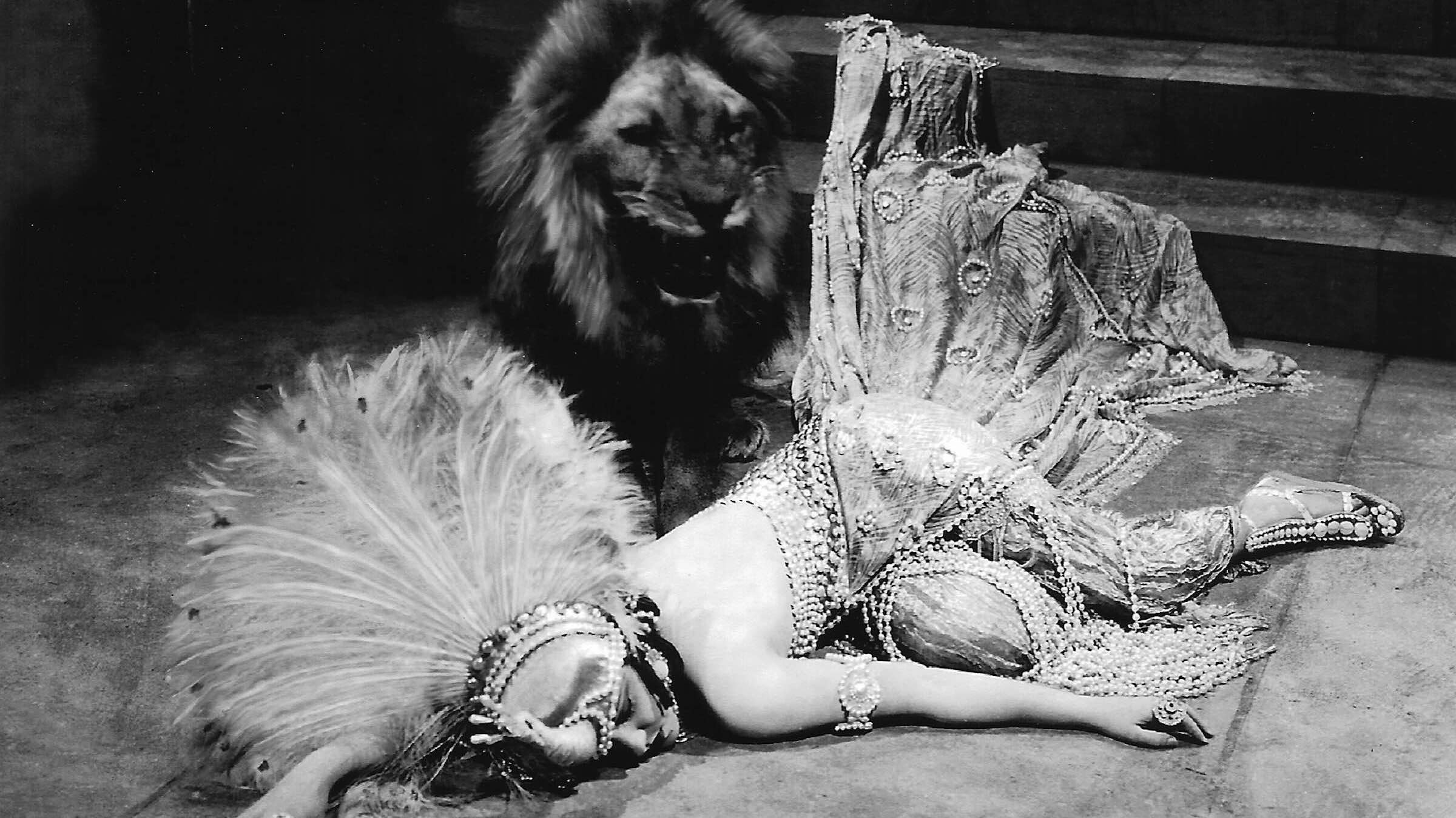Male and Female, based on Sir James M. Barrie’s comedy of manners The Admirable Crichton, is notable as one of the biggest hits for two Hollywood film legends—the first superstar, Gloria Swanson, and director Cecil B. DeMille.
Swanson entered films in 1914 at the age of 15 after a chance visit to the Essanay Studios in her native Chicago. While making comedies, she met her future husband, actor Wallace Beery, and followed him to California, where she signed on with Mack Sennett’s Keystone Studios. Years later, Swanson recalled that she didn’t have much of a sense of humor in those days, which is what made her effective in comedy—she played it straight. When Sennett offered to turn her into another Mabel Normand, Swanson told him she didn’t want to be “another anybody.” She moved to the Triangle Corporation, where she made a series of melodramas that brought her to the attention of Cecil B. DeMille.
If Swanson was the first superstar, then DeMille was the first superstar director. He studied at the Academy of Dramatic Arts in New York and worked as an actor and manager for his mother’s theatrical agency. In 1913, he joined Jesse Lasky and Sam Goldfish (later Goldwyn) to form the Lasky Feature Play Company, one of the first motion picture companies in Hollywood, where he made The Squaw Man (1914), the first six-reel, feature-length motion picture produced in the United States. The Lasky Company eventually became Paramount Pictures, and it would remain DeMille’s home for the majority of his career.
DeMille was a commanding and flamboyant character, wearing open-necked shirts, jodhpurs, and boots, and using a riding crop and megaphone on the set. He became so thoroughly identified as the quintessential movie director that his initials C.B. became, as film historian David Thomson points out, “a symbol for blind arrogance.”
But DeMille’s power and influence went far beyond personal style. He not only directed many of the company’s prestige productions, he supervised the studio’s entire output. He toppled the reputation of American motion pictures as cheap entertainment for the masses by capturing middle class audiences with productions such as Carmen (1915) and Joan the Woman (1916), which starred opera diva Geraldine Farrar. He also lured audiences with sensational subjects such as the interracial romance of The Cheat (1916), starring Fannie Ward and Sessue Hayakawa, correctly predicting that sophisticated stories and upscale lifestyles would prove appealing at the box office.
Male and Female, the third pairing of Swanson and DeMille, is typical of all their collaborations in that Swanson endures domestic strife while elaborately gowned and coiffed. DeMille also incorporates one of his most elaborate “visions,” a flashback to ancient times. Supposedly designed to provide a moral lesson, it actually serves as an excuse for beautiful costumes and extravagant art direction. Unlike a number of Swanson’s films, Male and Female is a comedy. Although Swanson is attired in fabulous clothes and lounges in a grand house, she gets to satirize the suffering upper-class woman she usually portrayed.
To shoot the desert island scenes, cast and crew traveled to Santa Cruz Island off the coast of Santa Barbara, where they faced some harrowing moments. During a scene aboard the wrecked yacht, costar Thomas Meighan nearly drowned, and Swanson suffered scratched and bloody knees and hands, which she endured without complaining. DeMille admiringly began calling her “young fellow,” as if she were one of the boys.
But the Babylonian sequence in which she is thrown to the lions was a worse ordeal. The lion lunged at her during filming of the first part of the scene, and DeMille decided to scrap the entire sequence. Swanson, however, insisted on continuing. In the next scene, the petrified Swanson lay absolutely still as the lion put its paw on her back, with DeMille and several trainers stationed just off-camera, whips and cocked pistols in hand. The scene was completed without mishap, and DeMille showed his gratitude by offering Swanson her choice of compensation from a velvet tray laden with jewels.
Gloria Swanson’s fame peaked in the mid-1920s. She made Madame Sans-Gene (1925) in France, began producing her own films with the help of financier Joseph P. Kennedy, and earned her first Academy Award nomination for Sadie Thompson (1928). Although she easily made the transition to talkies, her over-the-top glamour seemed passé during the Depression years. But the indomitable Swanson endured, always a star, working occasionally in film, television, and theater, most notably as Norma Desmond in Sunset Boulevard (1950). She died in 1983 at the age of 84.
As for DeMille, he remained the quintessential Hollywood showman right up to the time of his death at age 77 in 1959. The Greatest Show on Earth (1952) received an Academy Award for best picture, and his final film The Ten Commandments (1956), was a huge hit that is still revived annually on television.
Presented at SFSFF 2002 with live music by Michael Mortilla

